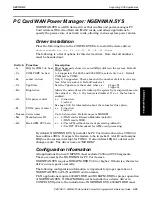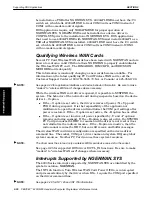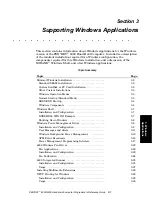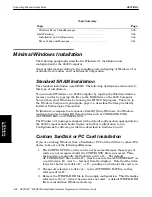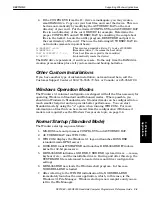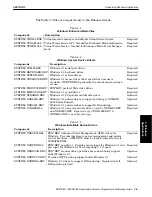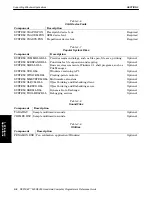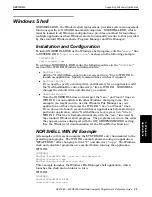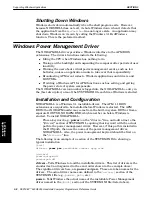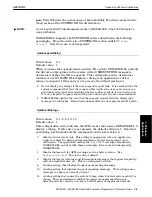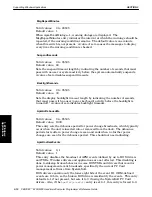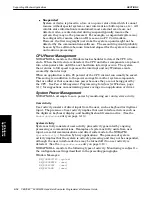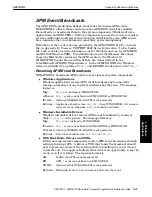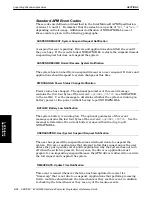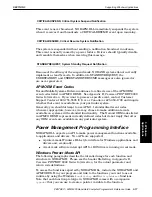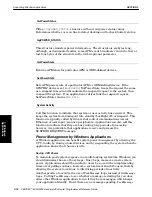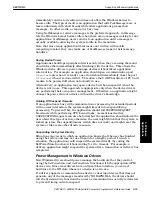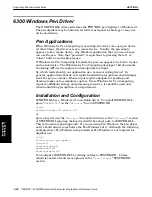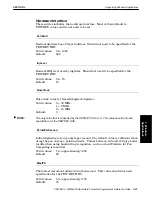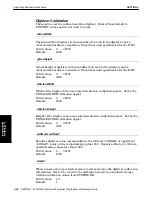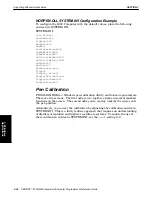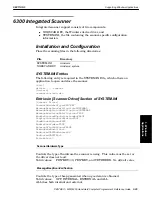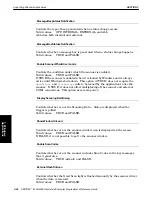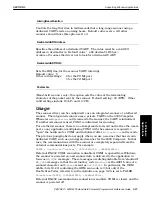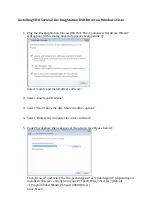
SECTION 3
Supporting Windows Applications
PEN*KEY
R
6200/6300 Hand-Held Computer Programmer’s Reference Guide 3-13
Audible Alerts
NORAPM.DLL can alert you to various system events either by issuing beeps or
by playing Windows 3.1 WAV" audio files through the system speaker. If WAV
files are to be played, you must Install the Windows 3.1 multimedia extensions.
See
Installing Windows Multimedia Extensions
, page 3Ć28.
NORAPM.DLL can issue an audible alert whenever it detects a change in the ac
online status. For example, this kind of status change occurs when the HHC is
inserted into or removed from the dock or when a wall charger is connected or
disconnected. NORAPM debounces the status change for approximately two
seconds before issuing the alert. Note that some systems delay notification of
power changes for up to ten seconds. Alerts could therefore take up to about 12
seconds to sound on these systems.
If you want to attach multimedia audio alerts (WAV files) to ac status changes,
insert the following entries into the
[Sounds]
section of the WIN.INI
configuration file.
ApmAcOn and ApmAcOff
Valid values:
WAV filename path
Default values: None
These entries identify the WAV files that play when ac online status changes
occur. If an entry is blank or missing, the default system beep is substituted. If
WAV files are to play, Windows 3.1 multimedia extensions must be installed.
Windows Background Power Management
As the APM operating system driver, NORAPM.DLL cooperates with the APM
BIOS to save as much power as possible without application or driver
intervention. This arrangement lets you build a system with reasonable power
consumption without having to create powerĆaware drivers and applications.
You can often achieve even better power management by cooperating with
applications and drivers. See
Power Management Programming Interface for
Windows
, on page 3Ć17, for details.
Windows Power States
Four power states are currently implemented in Windows by NORAPM.DLL.
Each state may see the system as a whole or to individual devices, such as a
LAN interface or a serial port. However, unless otherwise specified, the terms
for these states see the entire system.
"
On
System or peripheral device is running at full speed.
"
Idle
System or device is placed in a lowĆpower state from which it returns when
activity occurs. For example, the CPU is idled between hardware
interrupts.
"
Off
System or device is powered completely off. It loses all volatile state
information and does not respond to any external events until power is
reapplied. This state is not typically supported for the system itself in
NORAND products, because the Suspend state draws so little power. Some
peripheral devices, however, may support this state.
3. Windows
Applications

